Any football club with Red Bull connections commonly connotes the power of youth with the sport.
Whether young players or up-and-coming managers, they are ready to display their reinvention and youthful outlook on the footballing landscape.
RB Leipzig in Germany is at the top of the Red Bull hierarchy, but for most players who make the step to the Bundesliga club, the starting point for these players’ development usually begins at RB Salzburg in Austria.
The player pathway is quite straightforward, with players such as Dayot Upamecano (now at Bayern Munich), Amadou Haidara, and Dominik Szoboszlai all making the switch.
However, they have also created a pathway for managers, which creates a springboard for coaches to show their skills.
Ex-Salzburg managers such as Marco Rose (now at Borussia Dortmund), Jesse Marsch, Adi Hütter
, and Roger Schmidt have all benefited fromthe Salzburg stage and become top coaches in the game, but the trend does not stop with just these coaches.
Matthias Jaissle — the new kid in town.
Granted, calling him a kid may be inaccurate, but he is a managerial newborn, aged 33 and only taking his first managerial job with FC Liefering in 2021, a Red Bull affiliated club currently operating in the second division in Austria.
Jaissle is currently managing Salzburg in the top division.
At Red Bull Salzburg, Jaissle has shown great promise as a top manager, and most should not be surprised when he eventually moves on and plies his trade higher within the footballing pyramid.
With Matthias Jaissle’s structure regarding tactics, which optimises the strength of his team, besides the talented young guns, under his tutelage, Salzburg is currently first within the Austrian Bundesliga, but much is expected on that front.
Although, in the European arena, RB Salzburg has progressed to the knockout rounds of the UEFA Champions League for the first time since the 1990/91 season.
In this tactical analysis, I will cover tactical trends displayed within Matthias Jaissle’s RB Salzburg team, which have made him successful so far.
Trends include their build-up patterns, space creation, and some off-the-ball tendencies.
Matthias Jaissle’s Formation & Line-up
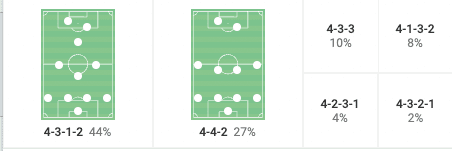
So far in his early Salzburg career, Matthias Jaissles’ formation has primarily set his team up in a 4-3-1-2 set up, but the young coach has deviated from this formation over the course of the 2021/22 season.
During some matches, Jaissle will revert to the classic 4-4-2 formation, which shares commonalities with his trusted 4-3-1-2 formation.
To a lesser extent, a 4-3-3 and 4-2-3-1, along with other formations, have made a rare appearance.
Matthias Jaissle’s go-to starting structure is the 4-3-1-2, but with the young coach’s variety of schemes, the 33-year-old manager can alter and change when needed to keep things fresh and the opposition on their toes.
Regarding the starting line-up, Matthias Jaissle is afforded the luxury of changing his line-up when he sees fit because of the quality advantage he enjoys within the Austrian Bundesliga.
Philipp Köhn is Salzburg’s number one.
He mixes good ball-playing ability with strength and athleticism, which allows him to leave his line and sweep behind his backline.
The regular centre-back partnerships of Jérôme Onguéné, alongside Maximilian Wöber and Oumar Solet, suit Matthias Jaissle’s style of play.
A tactical understanding of the football principles formed by their head coach mixes well with players with good ball-handling capabilities.
Mohamed Camara is a mainstay at defensive midfield, usually joined by Luka Sučić and Nicolas Seiwald, all players who provide an abundance of energy.
The typical attacking trident on show for Salzburg, especially in European competition, is Brenden Aaronson, stationed in the number ten position, with Noah Okafor and rising starlet Karim Adeyemi up front.
The players making up this attacking trio all contain certain qualities that make this team tick, which will be discussed subsequently.
Matthias Jaissle’s tactical plan involves players with the required vitality and vigour, plus the talent and ability to execute.
Matthias Jaissle Build-up Play Variations
During the first phase, RB Salzburg, under Matthias Jaissle’s tactics, uses various methods to move the ball forward and progress.
For instance, the splitting of the centre-backs.
When building up, Mohamed Camara will join the middle of the defensive line, with both centre-backs in between him.
Today, most teams employ a 4-4-2 formation when out of possession, and Salzburg’s makeshift back three creates a 3v2 helpful situation.
When this back three is formed, attacking midfielder Brenden Aaronson will drop slightly deeper and re-create Salzburg’s midfield three.
Also, the full-backs are positioned high and wide to create offensive width, which will stretch the opposition and create space for progression.
This altering of positions creates a problem for the opposition, which can be reviewed when Salzburg faced WSG Tirol.
Here, we can see Salzburg’s back 3 in action, with v at the centre.
Brenden Aaronson, taking up the deeper position, is quite important within this situation, as he acts as a decoy within midfielder against WSG Tirol, who are made using a man-orientated marking system in midfield.
As WSG Tirol is engaged with opposition players in the middle and left side of the pitch, right-back Rasmus Kristensen is free on the far wide, with nothing but green grass ahead.
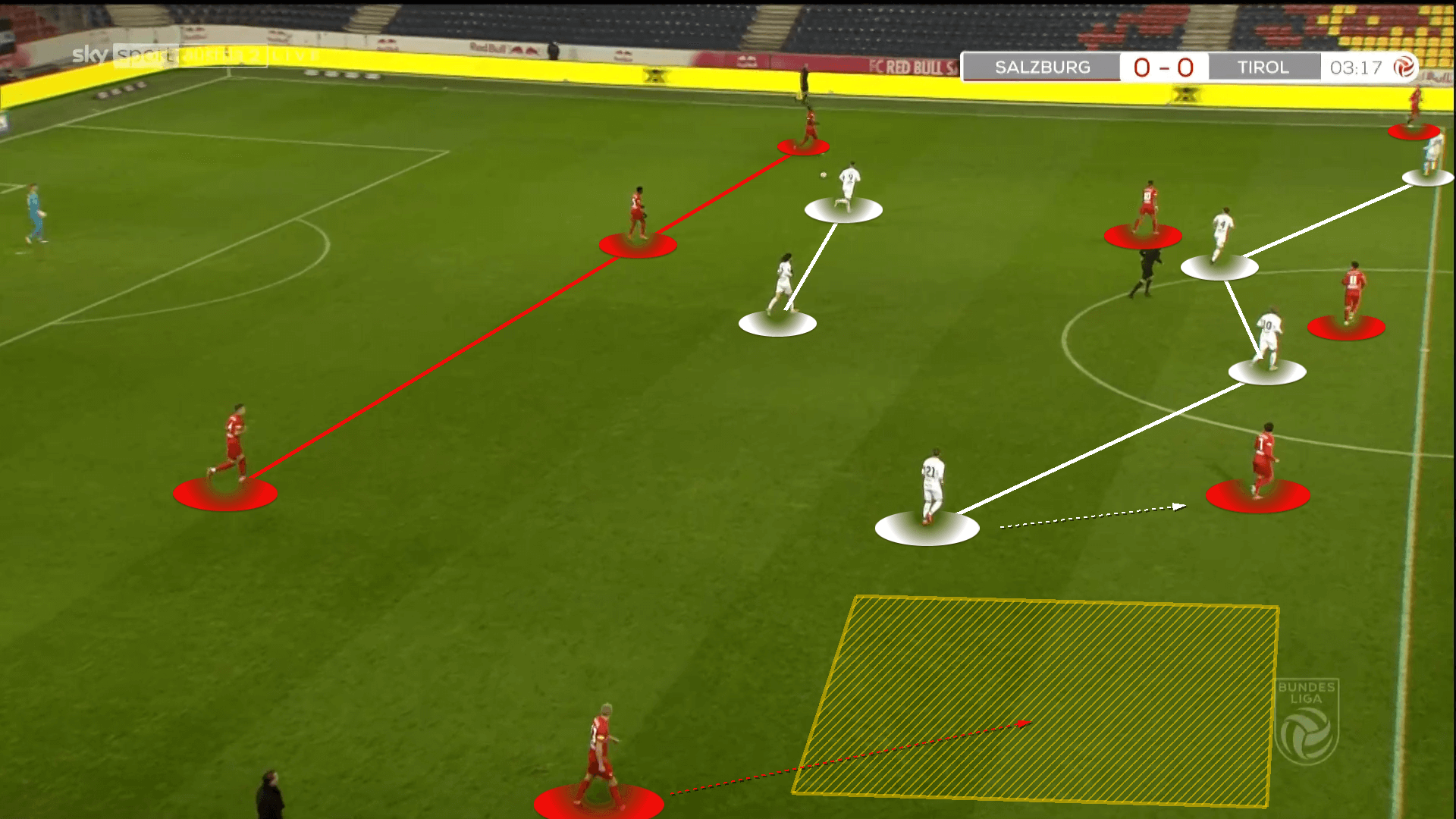
In addition to a 3atb system, RB Salzburg uses a generic back four in the build-up but makes slight rotations.
Here, Mohamed Camara is stationed at the right-back spot, which allows Rasmus Kristensen to push further forward and affect the game in an attacking sense.
Mohamed Camara, in this position, is also quite handy based on his ability to drive with the ball vertically, even when under pressure, and progress the ball forward.
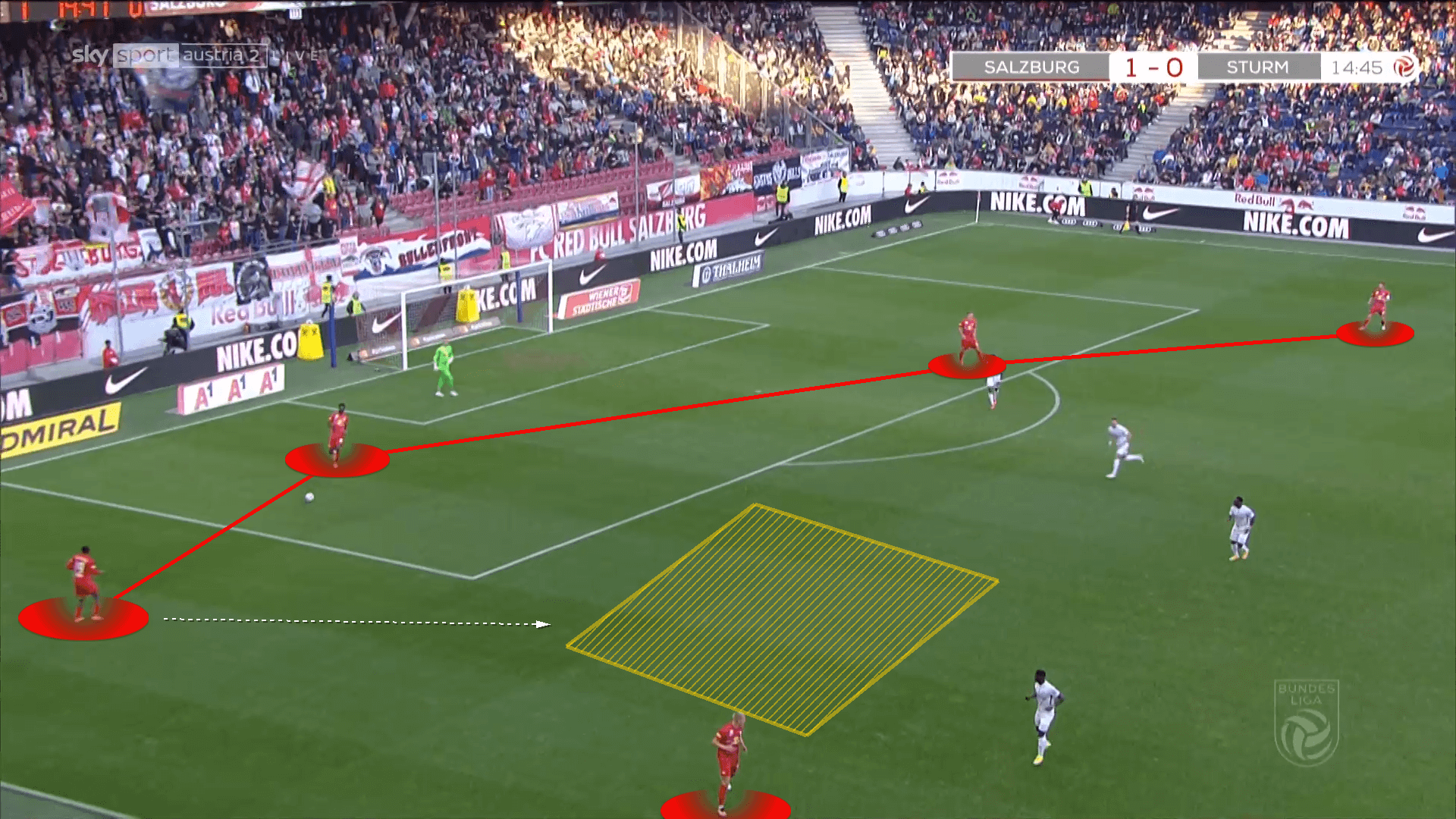
As Mohamed Camara drives forward, Brenden Aaronson vacates the attacking midfielder position and drops deep to facilitate play through the right half-space.
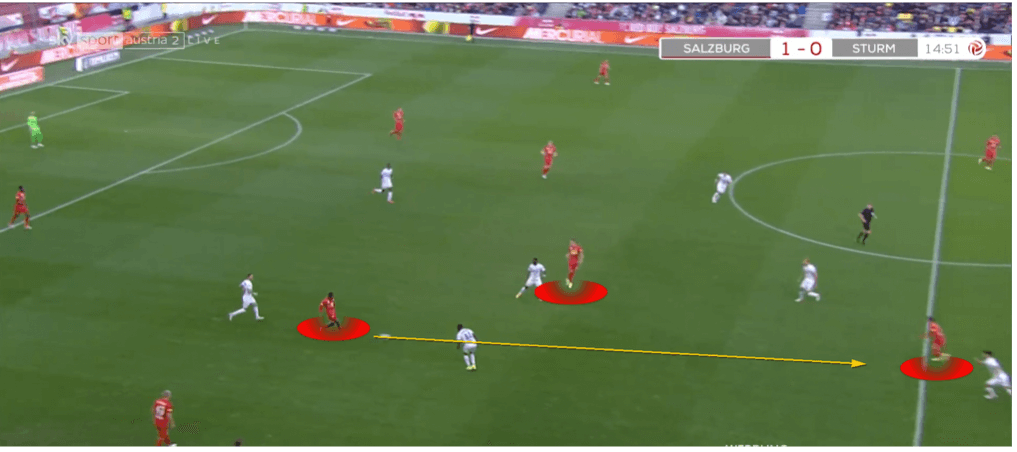
Width and Space Creation
The 4-3-1-2 formation provides many advantages for teams that use it; its four-man midfield creates superiority within the middle third.
However, with its midfield compactness can come a lack of width and with this in mind, the correct personnel and tactics must be put in place to allow this structure to work.
As mentioned before, Matthias Jaissle positions his full-backs high and wide, so Salzburg has the width needed to stretch the opposition and create offensive openings.
Based on Salzburg’s front three’s spacing and positioning, Jaissle’s 4-3-1-2 formation can resemble a 4-3-3 formation.
We can see that Noah Okafor is in possession out wide, with Brenden Aaronson down the centre looking to make a run in behind.
On the far side is Karim Adeyemi, operating on the right wing.
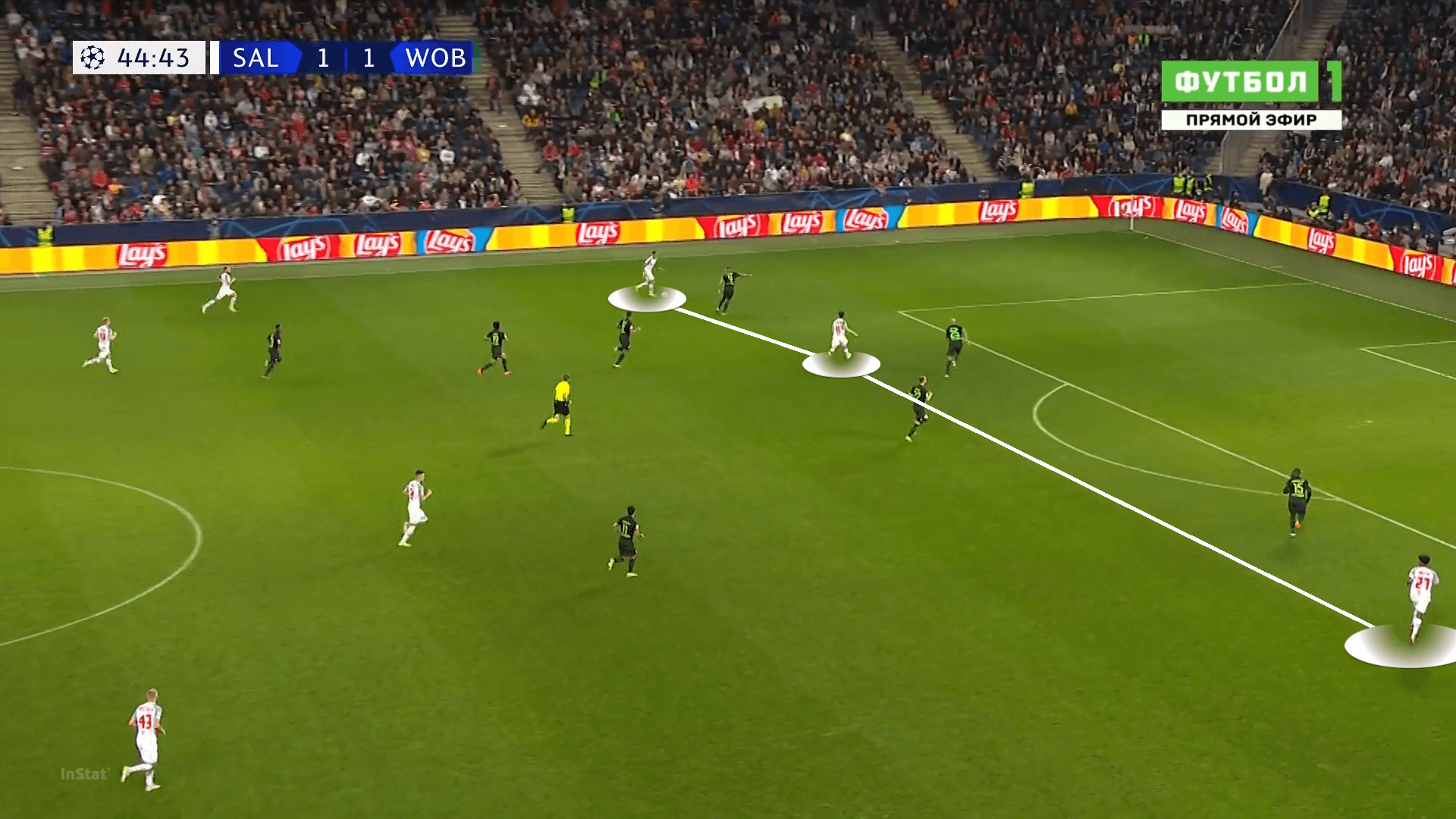
Again, we can see Salzburg attackers operating as a flat front three.
A key theme within Matthias Jaissle’s team is the specific movements of his attackers.
Here, Rasmus Kristensen has the ball, and an opposition full-back attempts to press and close the space, which creates a knock-on effect.
This allows Karim Adeyemi, on the right-hand side, to either make a run into the right-half space or receive to feet and find another avenue.
Adeyemi’s positioning also creates space for Brenden Aaronson, who can now make a run through the centre of the opposition’s backline.
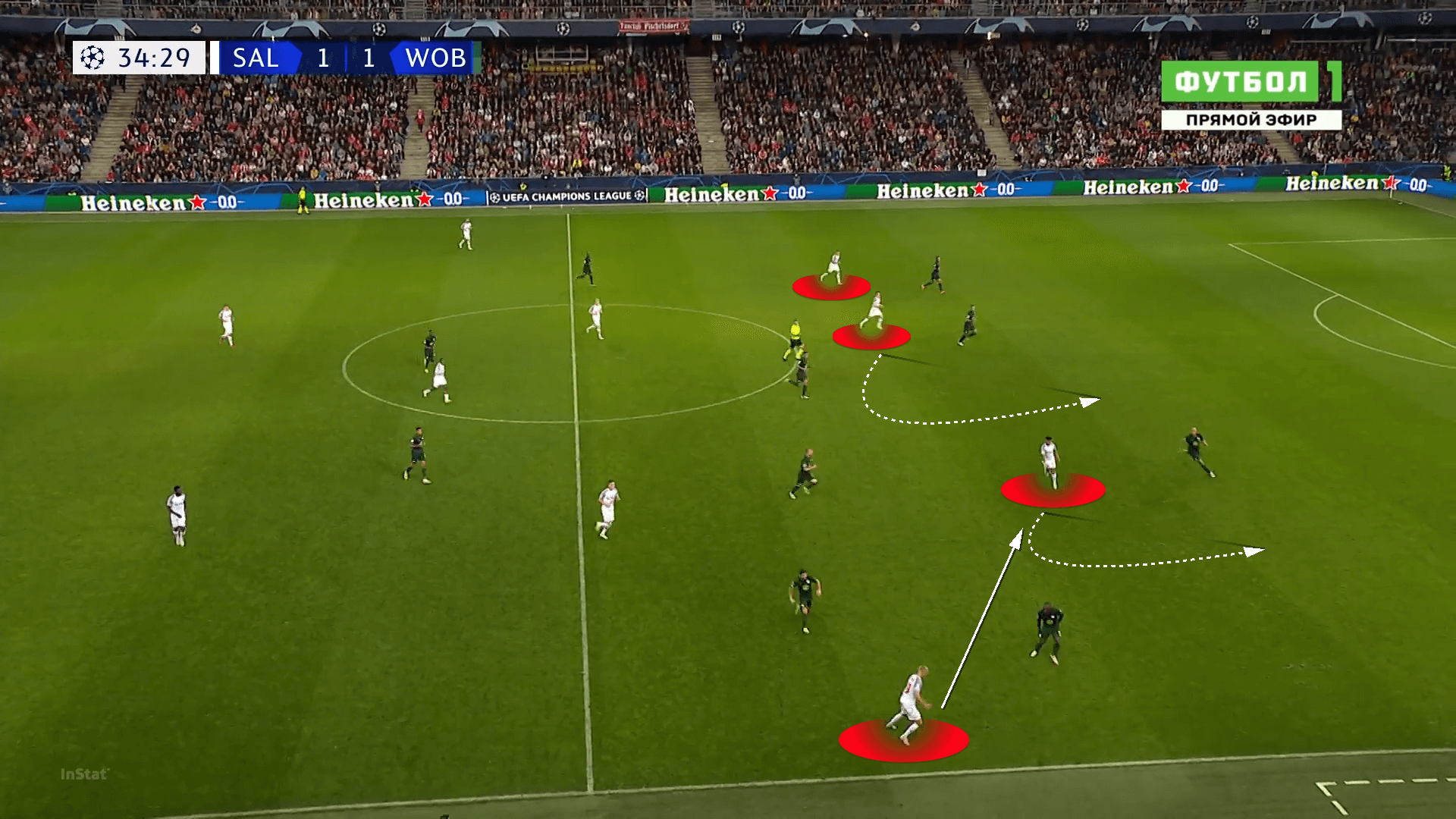
Salzburg creatively uses countermovements and rotations within the final third.
Here, Brenden Aaronson and Luka Sučić both do well to adjust their movements and attack the space presented.
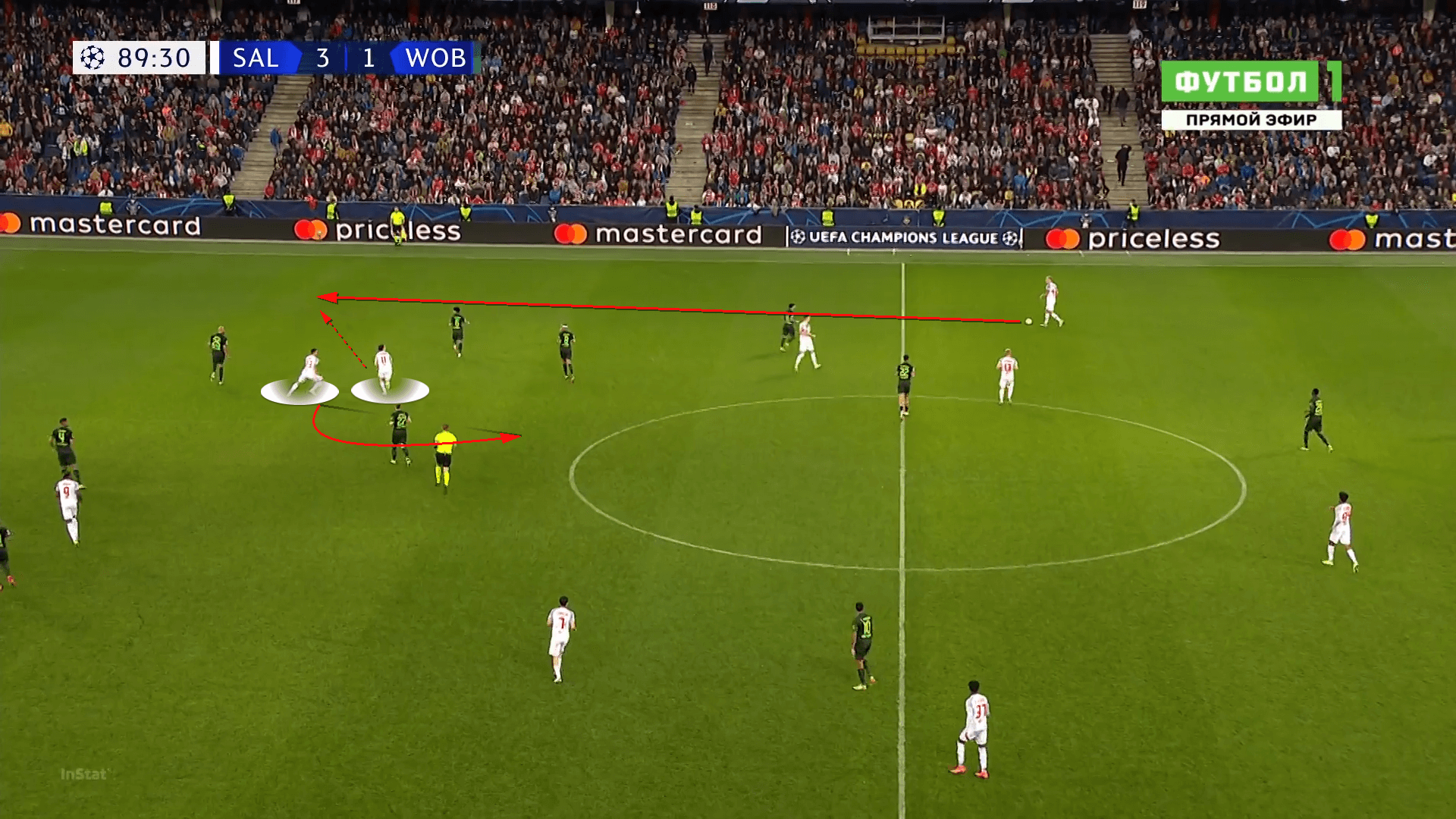
Red Bull Salzburg’s Press and Counter-pressing
Pressing is synonymous with Red Bull teams and something we expect to see, regardless of it being Leipzig or Salzburg.
Matthias Jaissle has carried on this way of playing and to good effect.
Matthias Jaissle’s style of play structures his press using a 4-1-3-2 formation. His outside central midfielders push higher and operate on the same line as their attacking midfielder.
Here, Salzburg’s 4-1-3-2 press is against Sevilla’s 4-2-3-1 in possession.
Salzburg’s two central strikers are tasked to create pressure against the two opposing central defenders.
The two central midfielders, stationed on both sides of their number ten, are instructed to press Sevilla’s full-backs if/when the ball goes out wide.
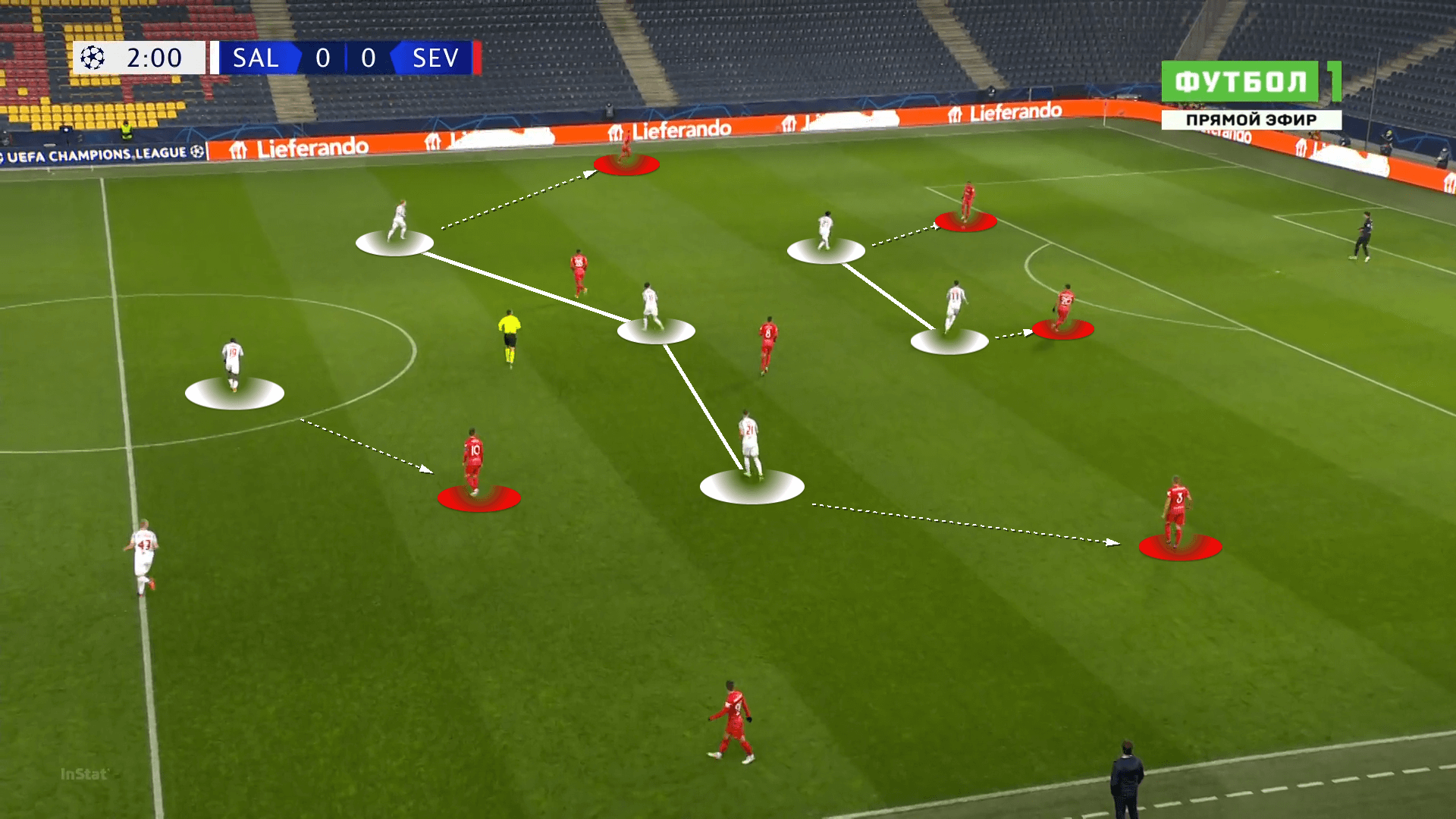
In this instance, RB Salzburg is currently set up in a medium block of possession.
With Aaronson and Nicolás Capaldo’s positioning, central passages are blocked, so their opposition must move the ball wide.
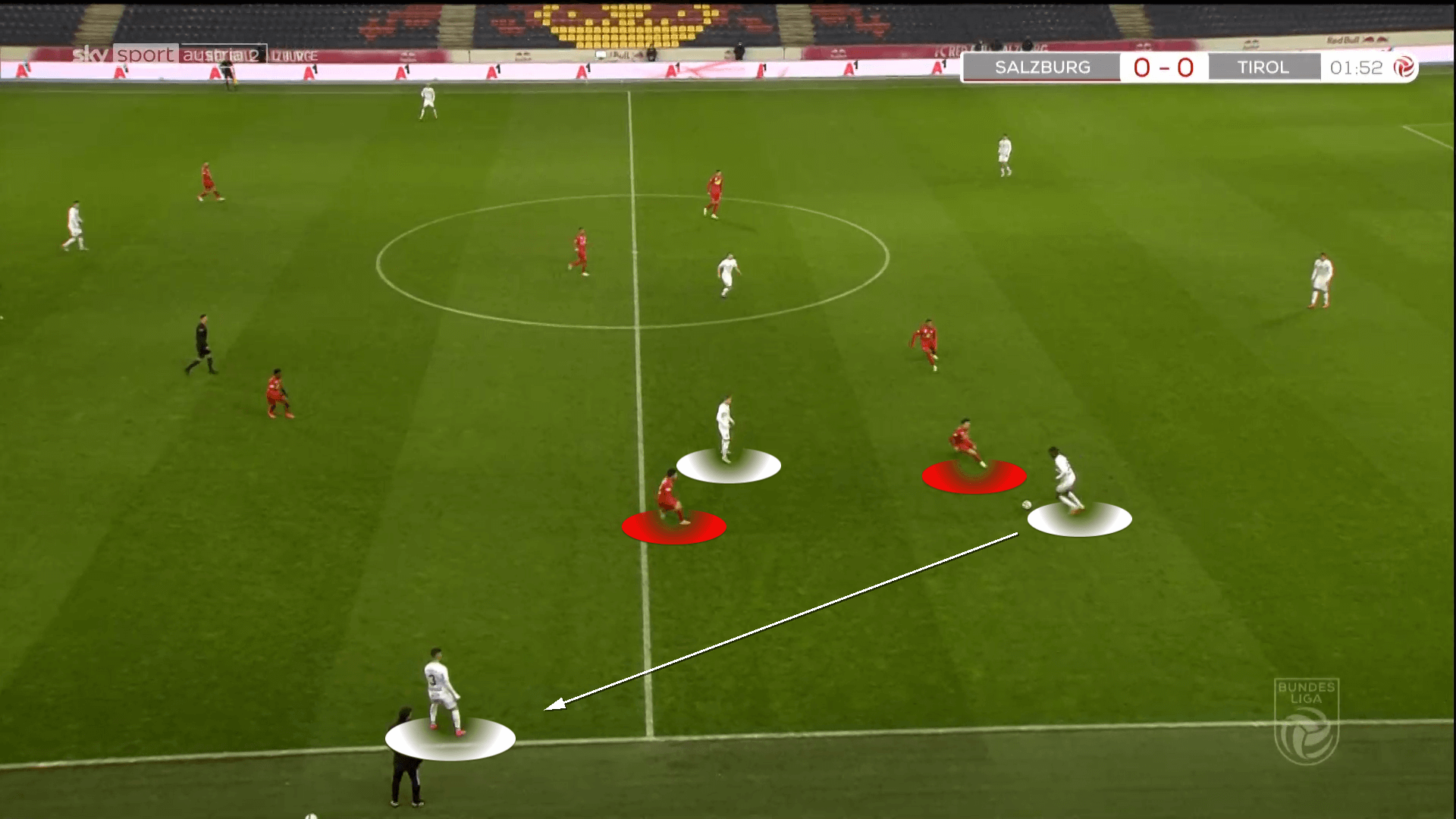
Once the ball eventually moves wide, Salzburg’s defensive block shifts to the direction of the ball carrier, who now has no passing options or space to progress the ball ahead of him.
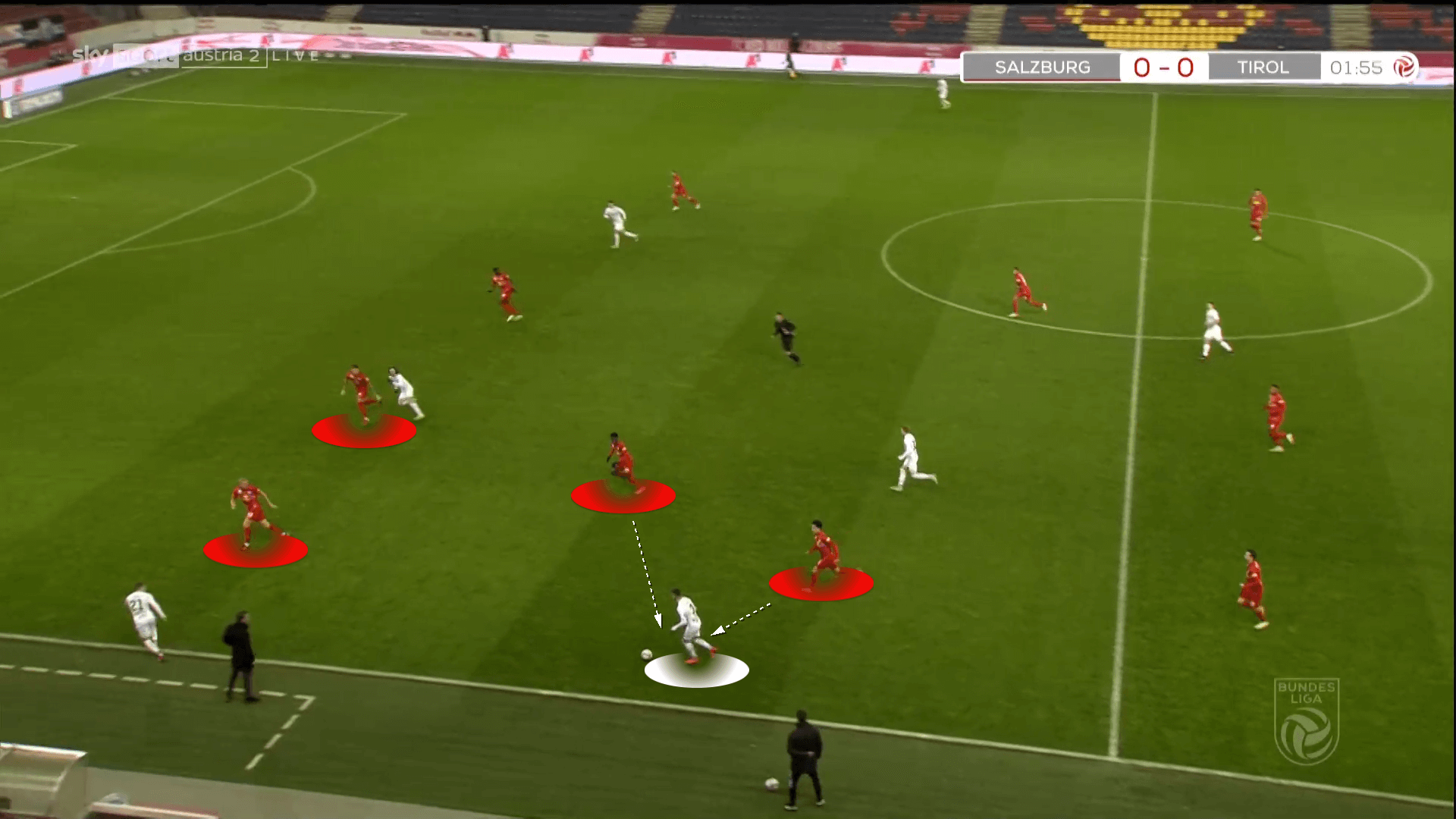
Conclusion
The player and managerial pathway Red Bull presents is quite incredible, and their conveyor belt of top talents does not look like it is stopping soon.
Matthias Jaissle, the current coach at Red Bull Salzburg, is taking Austria and Europe by storm while achieving milestones.
The young head coach is showing his ability to structure a cohesive team, both with and without the ball.

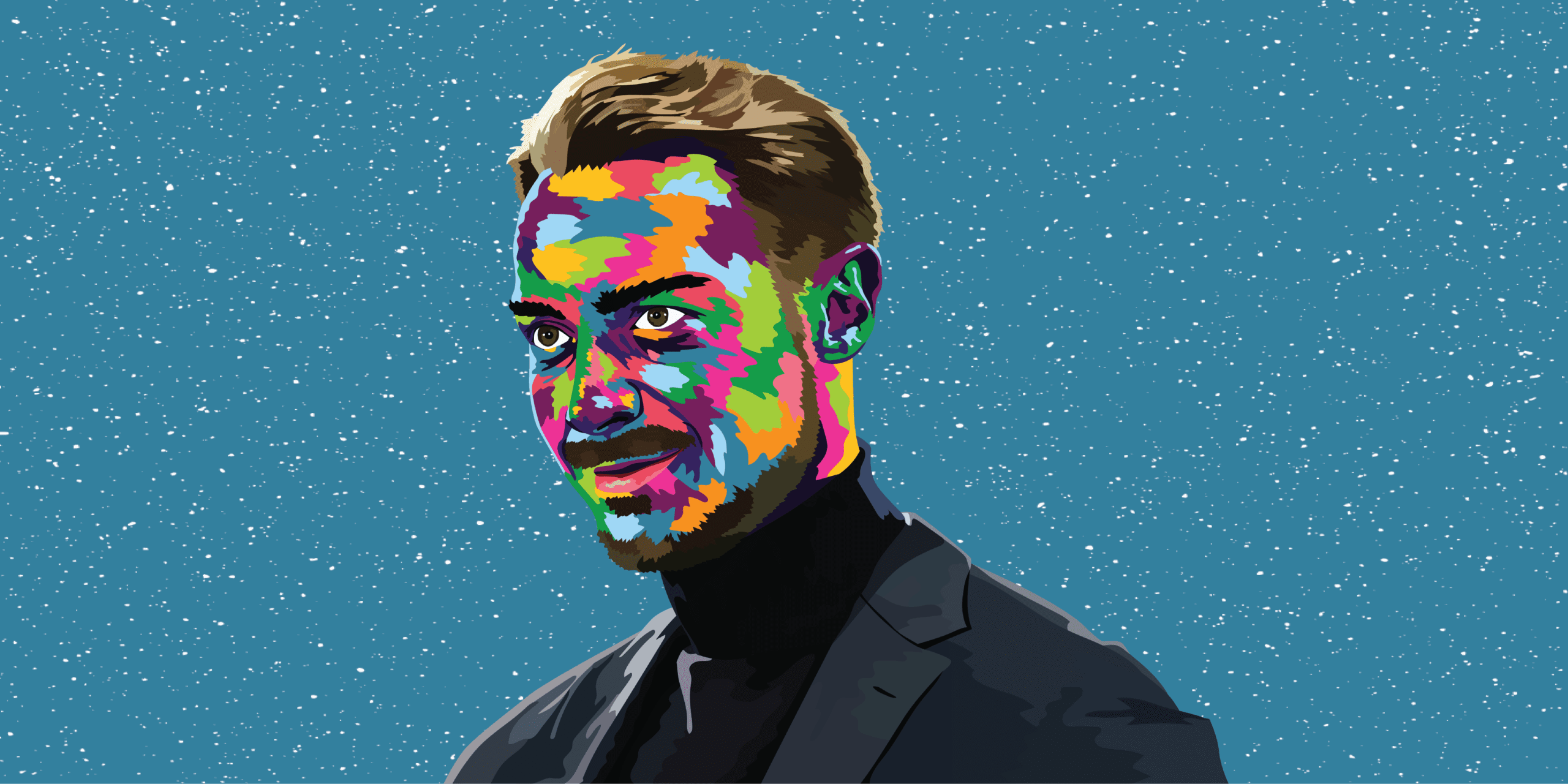



Comments